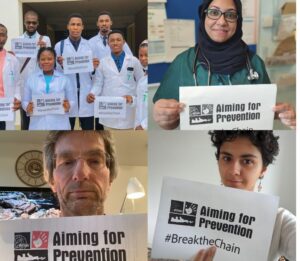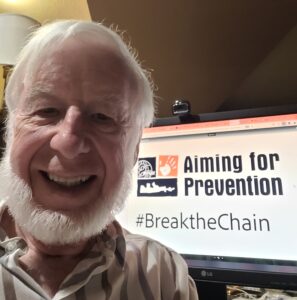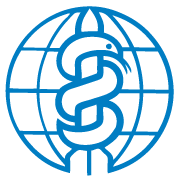Today the 7th Biennial Meeting of States of the United Nations Programme of Action on Small Arms and Light Weapons (UN PoA) convenes. According to the UN, with this international agreement adopted in 2001, “governments agreed to improve national small arms laws, import/export controls, and stockpile management – and to engage in cooperation and assistance,” with a goal “to prevent illegal manufacture of and illicit trafficking in small arms and light weapons, or their diversion to unauthorized recipients.”
A lofty goal, with over a billion small arms now in circulation involved in wars and crimes, suicides and accidents that result in hundreds of thousands of deaths and millions of injuries each year. How healthy is the UN PoA 20 years later? Have countries reduced human suffering and promoted cultures of peace? Are people safer from gun violence? The answers largely depend on key social determinates of health: where you live, your socioeconomic circumstances, and your cultural surroundings.
The preamble of the PoA contains a vision largely unrealized in the past 20 years, that is “States, regional and sub-regional and international organisations, research centres, health and medical institutions, the United Nations System, international financial institutions and civil society are urged as appropriate, to develop and support action-oriented research aimed at facilitating greater awareness and better understanding of the nature and scope of the problems associated with the illicit trade in small arms and light weapons…” ..

In 1996, the 49th World Health Organization (WHO) Assembly identified violence as a leading public health problem worldwide. Subsequently, the WHO developed the landmark document Small Arms and Global Health prepared for the first UN Conference on Illicit Trade in Small Arms and Light Weapons in 2001. In it the WHO states that “Violence is…..an important health problem – and one that is largely preventable. Public health approaches have much to contribute to solving it.”
Small arms and light weapons have been recognized as a humanitarian crisis. Sustained high morbidity and mortality rates for violent injury require a commitment to develop and support action-oriented research in order to address these injuries from a public health perspective. It is important to understand the context in which homicides occur in different countries. It has been recognized that several modalities of interpersonal violence occur in a complex interplay of individual, relationship, social, cultural and environmental factors. This approach for understanding the multiple levels of interaction has been defined as the ‘ecological model’. Among the universal risk factors identified that are associated with higher rates of armed violence are ready access to firearms, drug abuse or use of alcohol, and socioeconomic disparities.
The PoA explicitly calls for simultaneously approaching the small arms issue from both the supply and demand perspectives. A major driver of demand for weapons is an individual’s perception of security within his or her environment. Highly violent communities are therefore not just the central concern of the PoA, they are the environments which must be made less violent in order to reduce demand for small arms. The public health approach is ideally suited to engaging with community based prevention of armed violence, thereby providing the most direct means of driving down demand for small arms in the settings that need this action the most.
A public health approach to small arms injury focuses on the risk factors driving armed violence and the health effects of gun violence, and brings into the arena the public health community’s emphasis on scientific methodologies and prevention. Public health groups work with many sectors of society promoting a variety of measures that can reduce the frequency and severity of shooting injuries. The methods used are ones that have been developed and refined in preventing infectious and chronic diseases and injuries including polio and malaria, HIV infection, smallpox, and automobile fatalities in many countries. The same underlying approach can also reduce gun deaths and injuries, and there is documented evidence of this.
 Public health methods begin with information gathering. Data on gun-related injuries will guide the identification of the risk factors that contribute to these injuries. Possible interventions can then be developed that address those factors, targeted at high risk areas and groups, tested for feasibility, and evaluated for effectiveness. Results can be used by health professionals to bring awareness to the magnitude of the problem, and to advocate for public policies and health strategies to reduce violence.
Public health methods begin with information gathering. Data on gun-related injuries will guide the identification of the risk factors that contribute to these injuries. Possible interventions can then be developed that address those factors, targeted at high risk areas and groups, tested for feasibility, and evaluated for effectiveness. Results can be used by health professionals to bring awareness to the magnitude of the problem, and to advocate for public policies and health strategies to reduce violence.
IPPNW is committed to addressing armed violence prevention from a public health approach. We seek to break the chain at the weakest link. Join us in our campaign #breakthechain.

